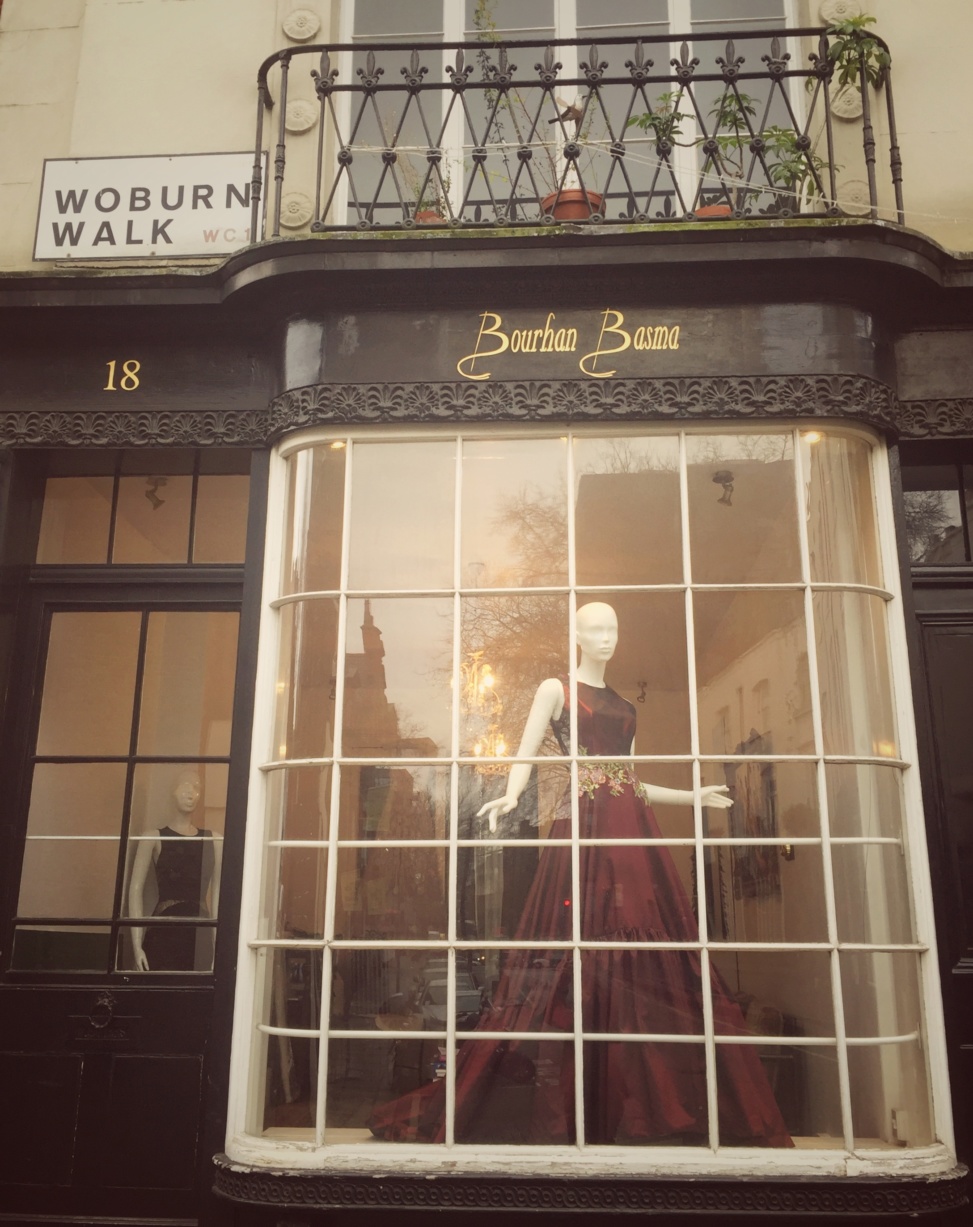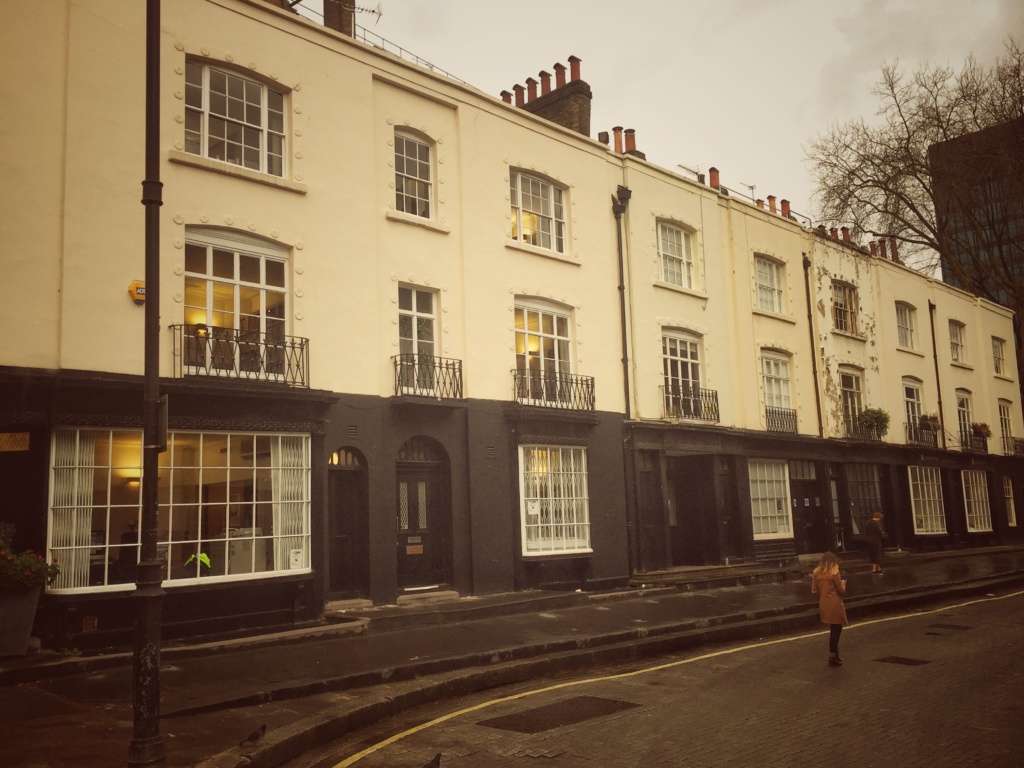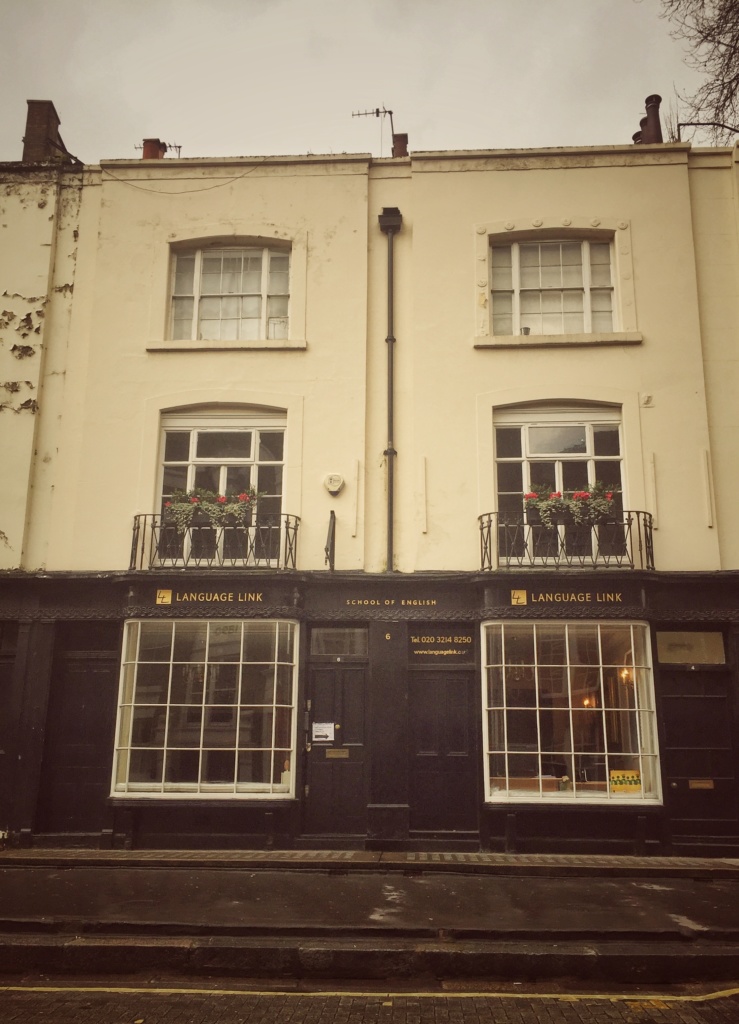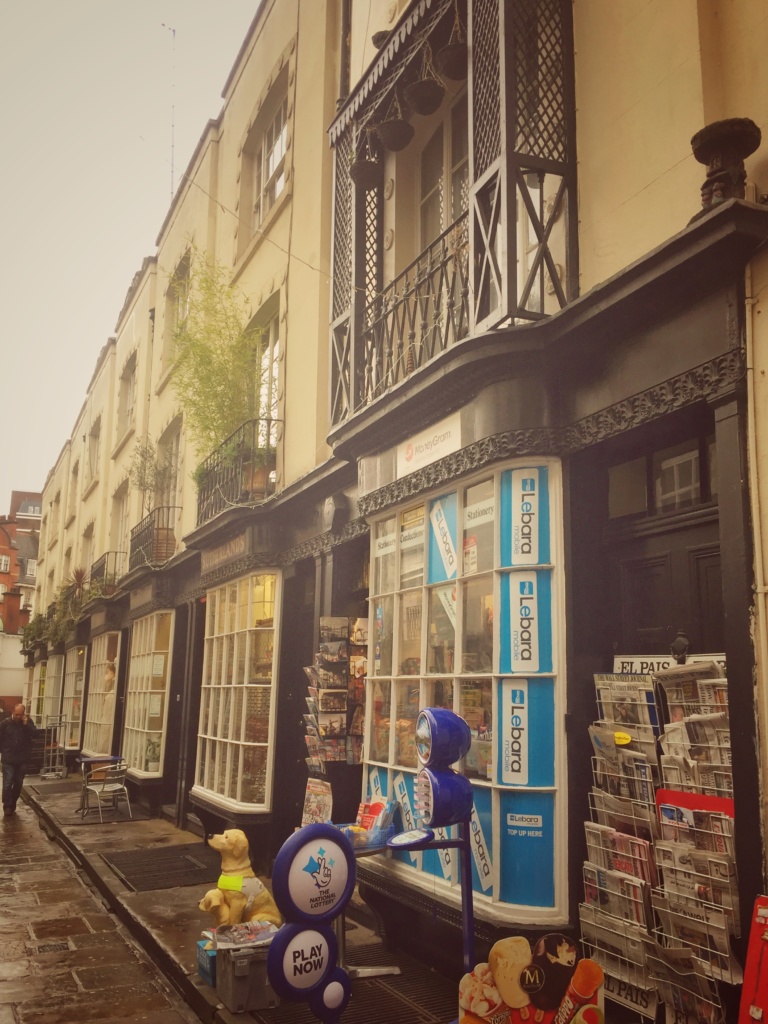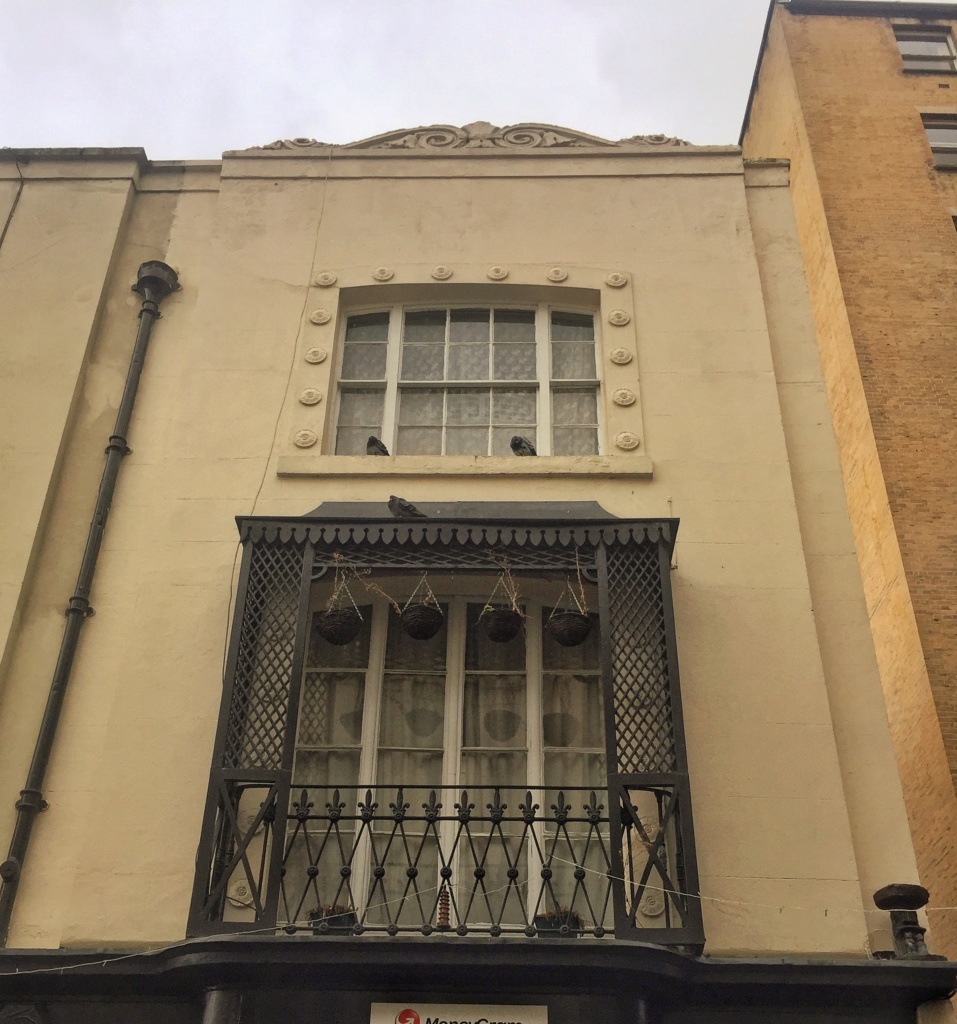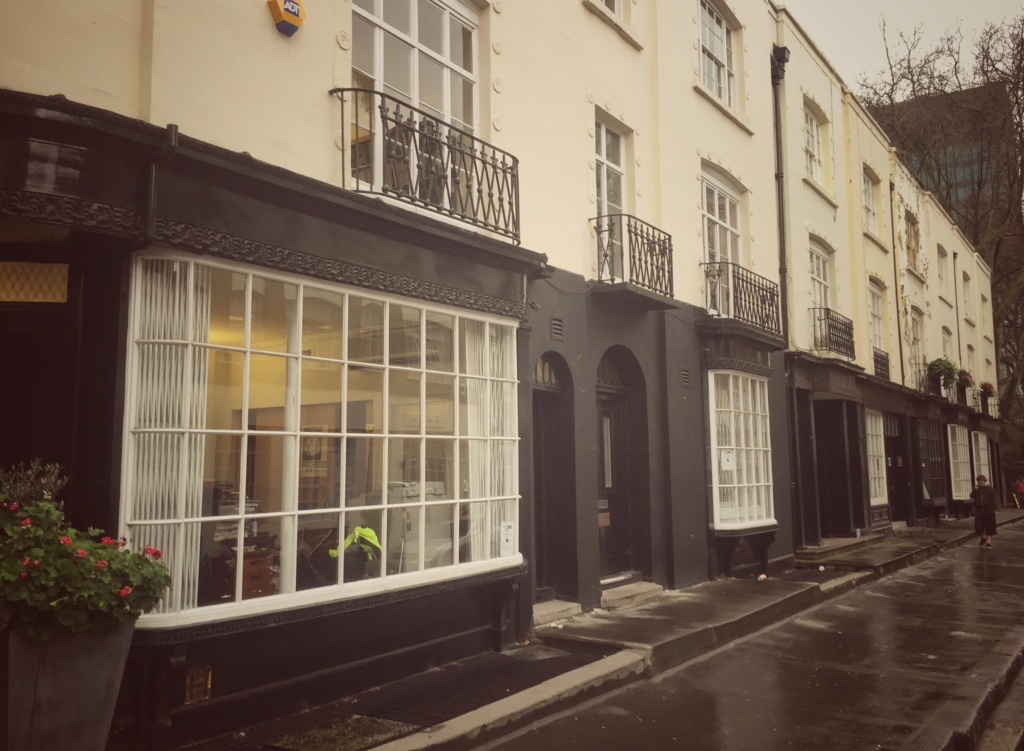One great pleasure of walking the streets of London is to turn a corner, wander down an unfamiliar street and find something at the end of it that takes the breath away.
Another pleasure is getting on the internet or searching through old books to find out about the newly discovered London gem.
Whilst looking round the back of St Pancras Parish Church I came across this collection of late Georgian buildings. One terrace is in Duke’s Road and the rest of the buildings comprise a pedestrianised walkway of shops and cafes off to the right of Duke’s Road in Woburn Walk.
Each building has a wonderful bow window and above street level a number of them have very nice original decorative ironworks.
It turns out that they were built in 1822 by Thomas Cubitt who put up many of the classic Georgian buildings of London including the famous balcony of Buckingham Palace, the north and west sides of Easton Square, Gordon Square, Tavistock Square and swathes of Belgravia around Belgrave Square.
Cubitt was originally a poor ship’s carpenter who made sufficient monies from his voyages to India to fund a building company in the Grays Inn Road – in his early twenties. He had a reputation as a good and fair boss who was also forward thinking and innovative. He looked after his employees, replacing all of their tools when a fire destroyed both the Grays Inn Road premises and along with it, their tools.
He could also hobnob with the best of them, getting on with aristocrats and royalty and raising capital to fund his massive development projects. It was likely Cubitt who suggested to Prince Albert that London should host the Great Exhibition in 1851.
He was involved in a number of good works, buying a large part of river front land to extend the embankment and stop London flooding. Cubitt also campaigned for Battersea Park which can owe its existence to him.
There are many grand Cubitt buildings remaining in London and beyond – he developed Kemp Town in Brighton – but these small shops, offices and cafes are a particular and unexpected delight, just off the busy Euston Road. They are a small glimpse of the London that sat at the centre of an Empire approaching its peak which had money sloshing its way back to it from the four corners of the globe. New and revolutionary buildings were going up to house the people who were at that point running much of the world. And even shops like these were built with poise and swagger. Half close your eyes and you can still see the busy ghosts rushing by you.
